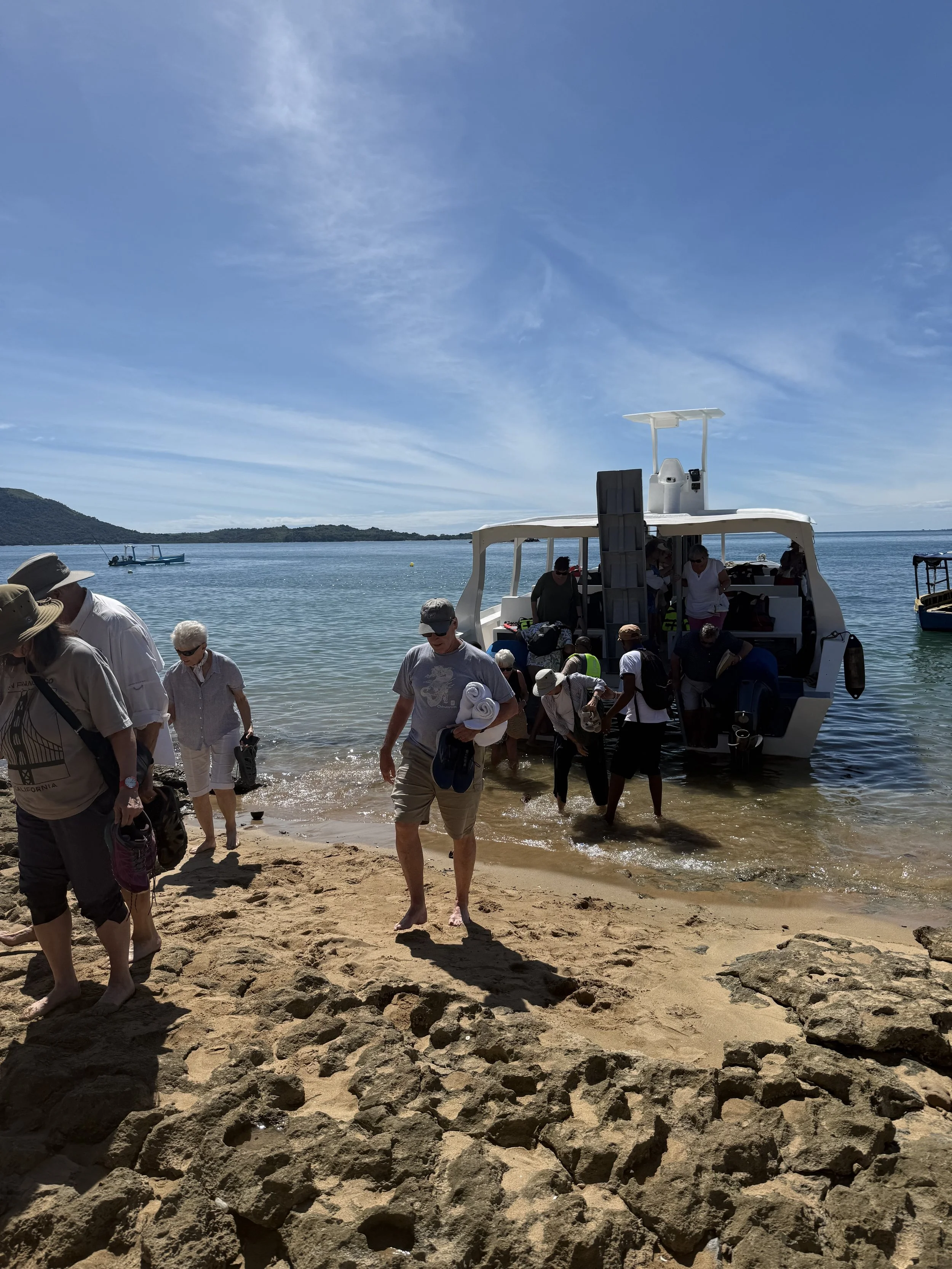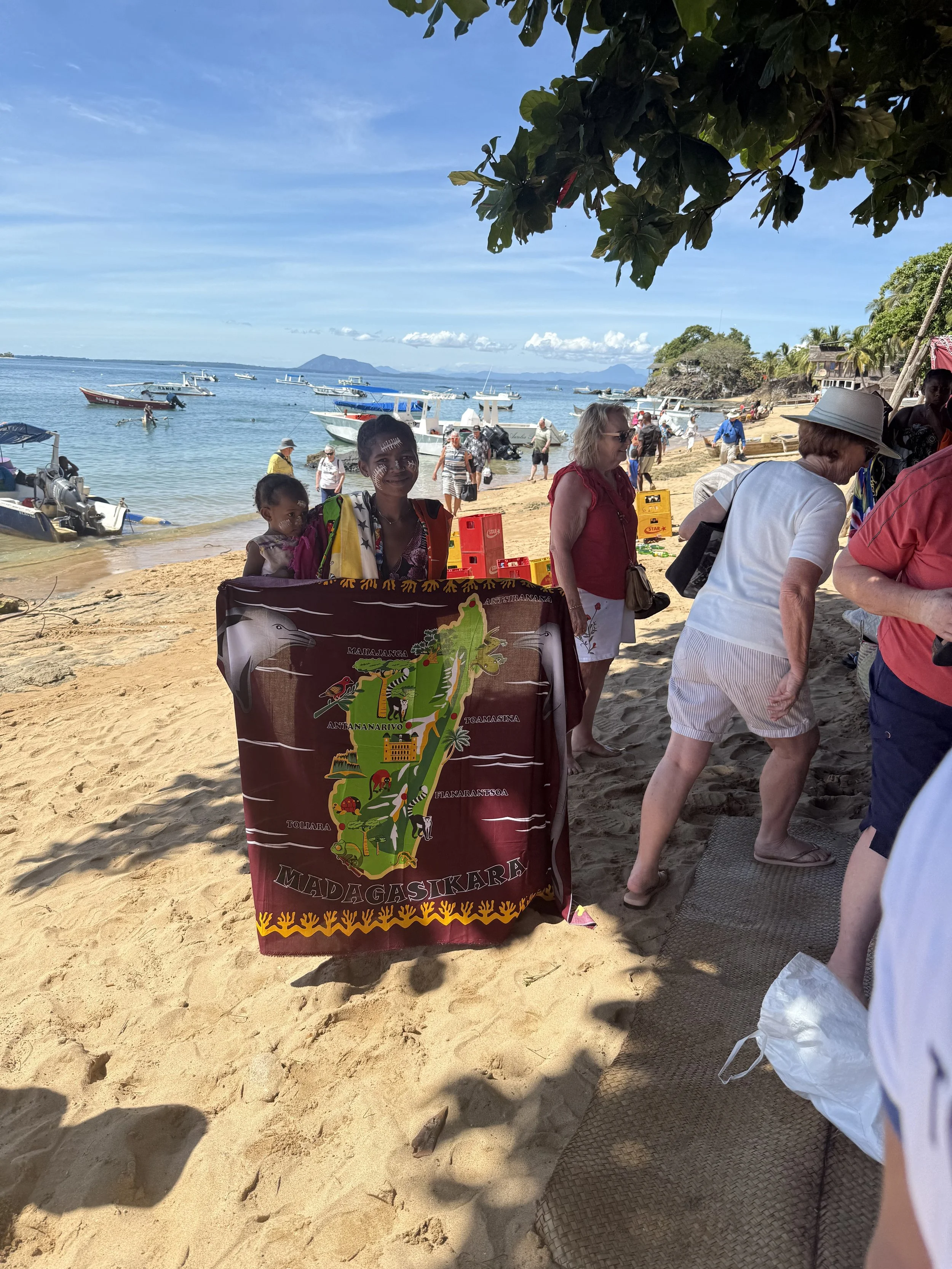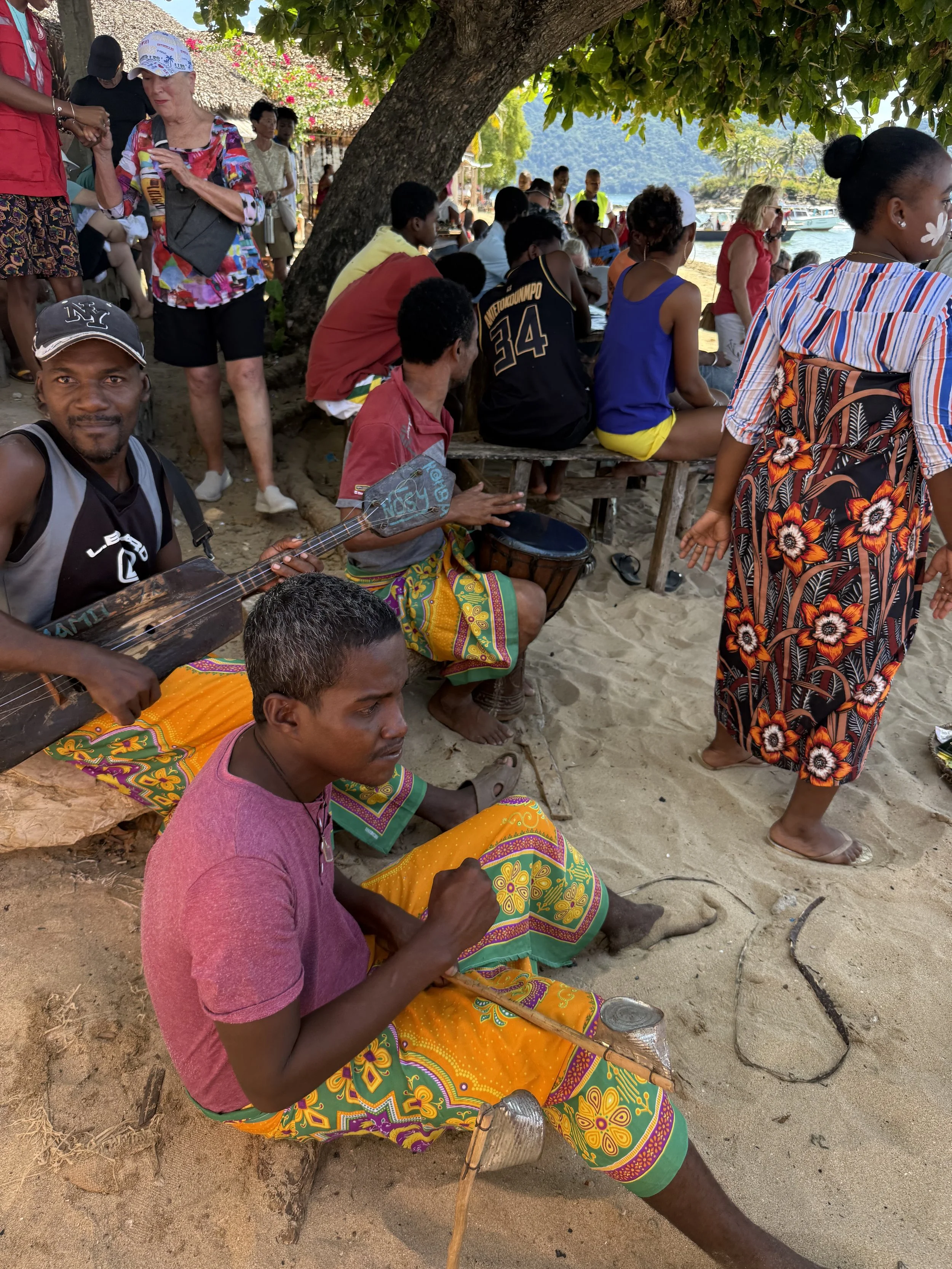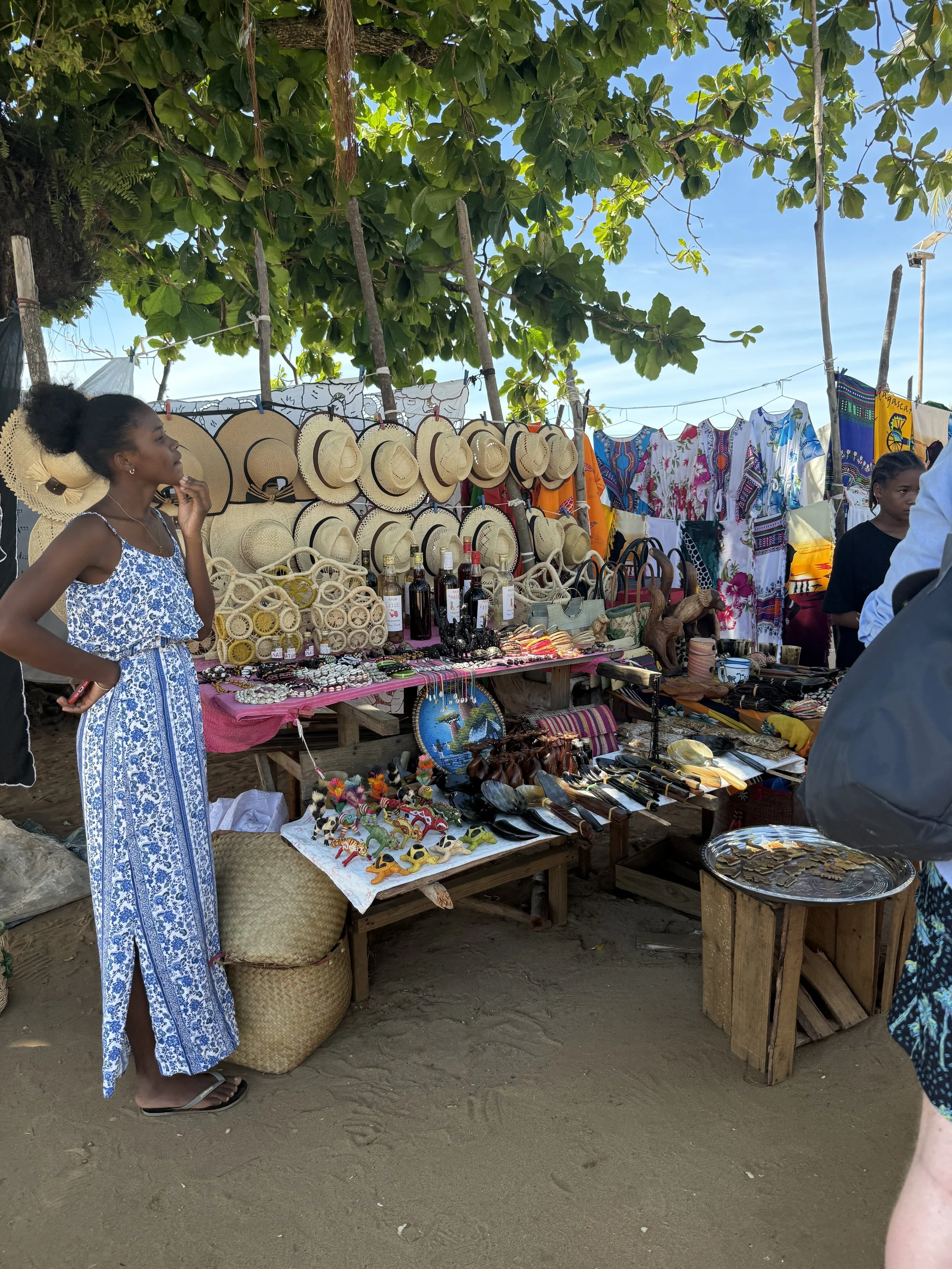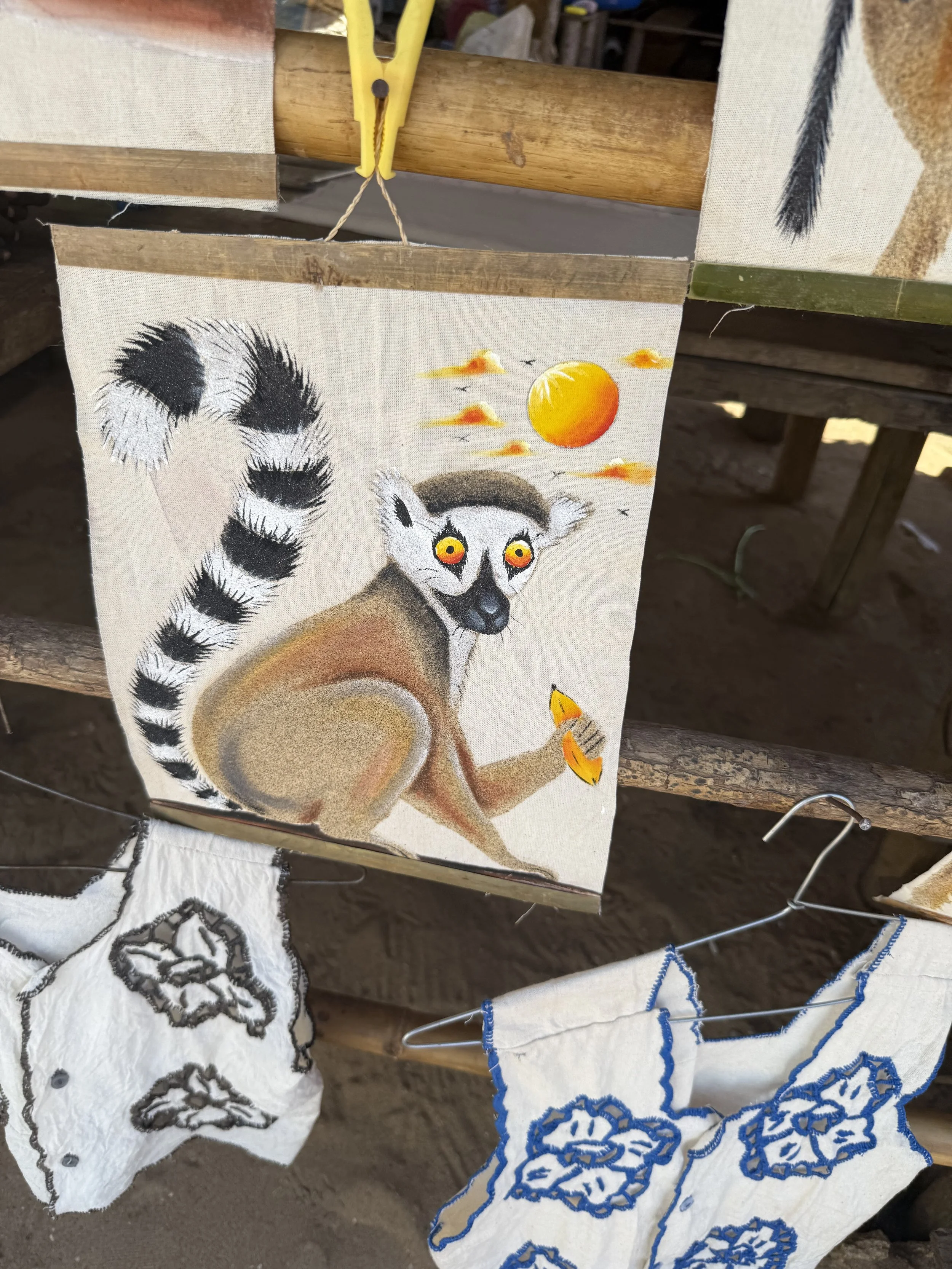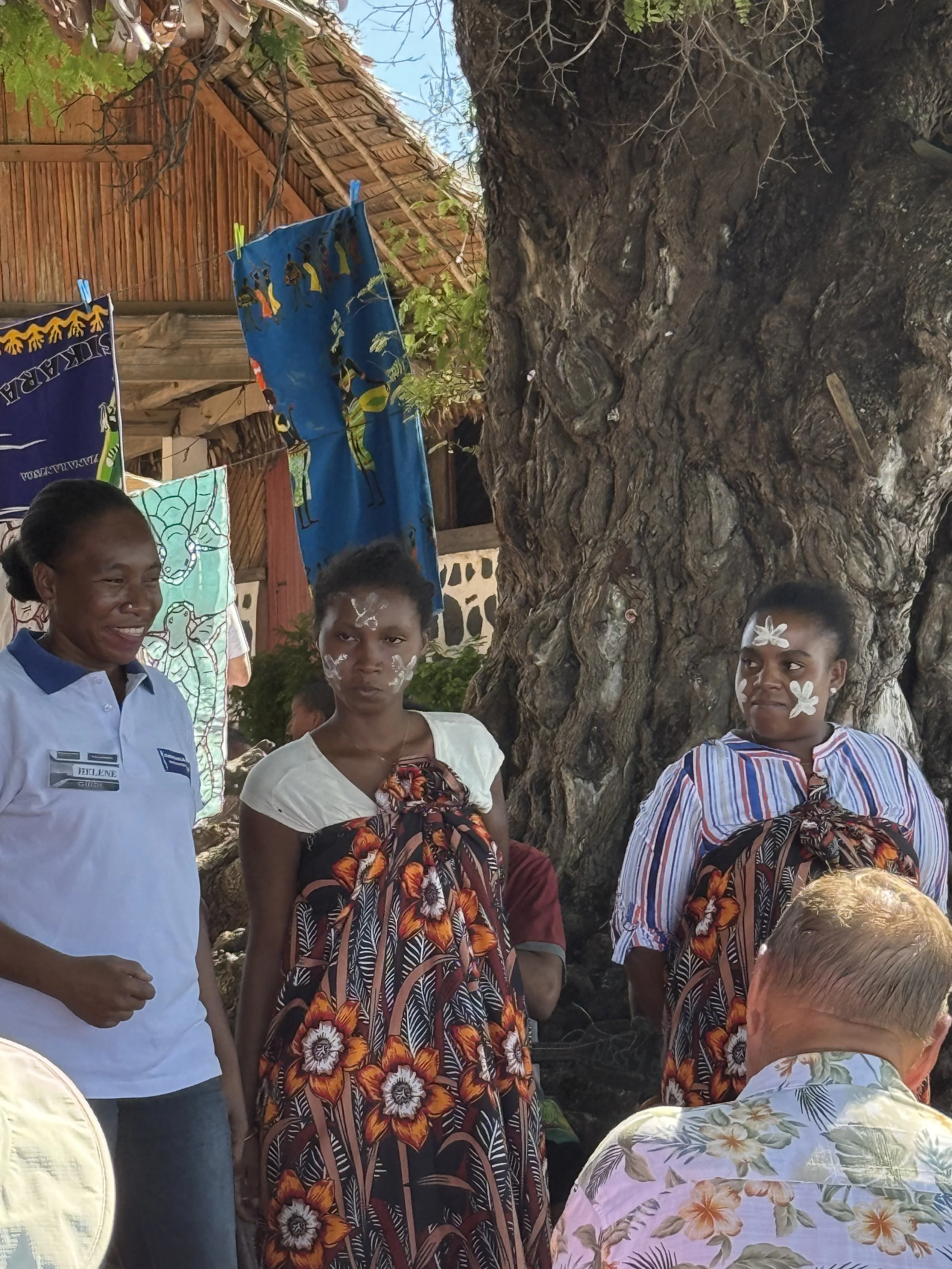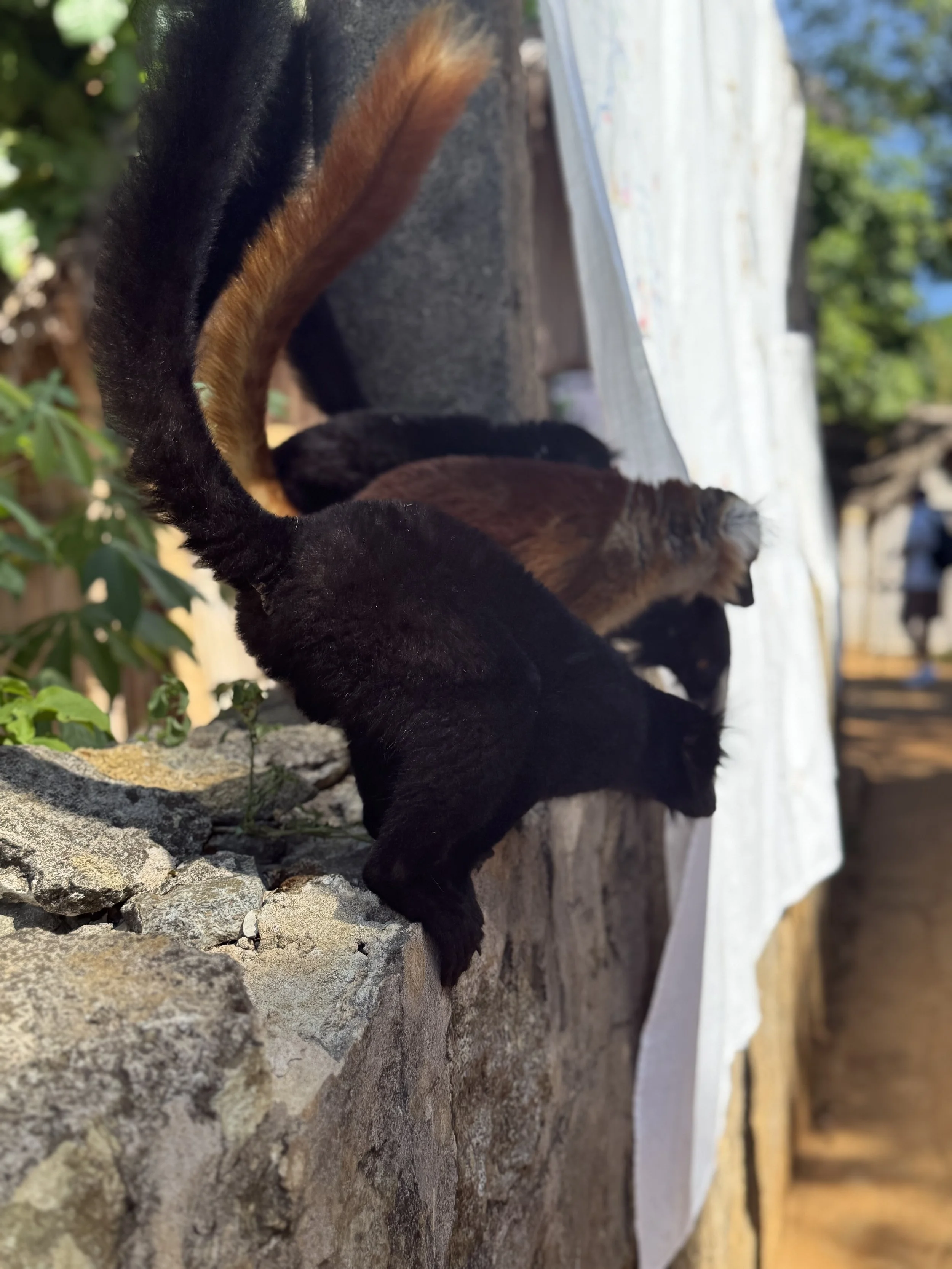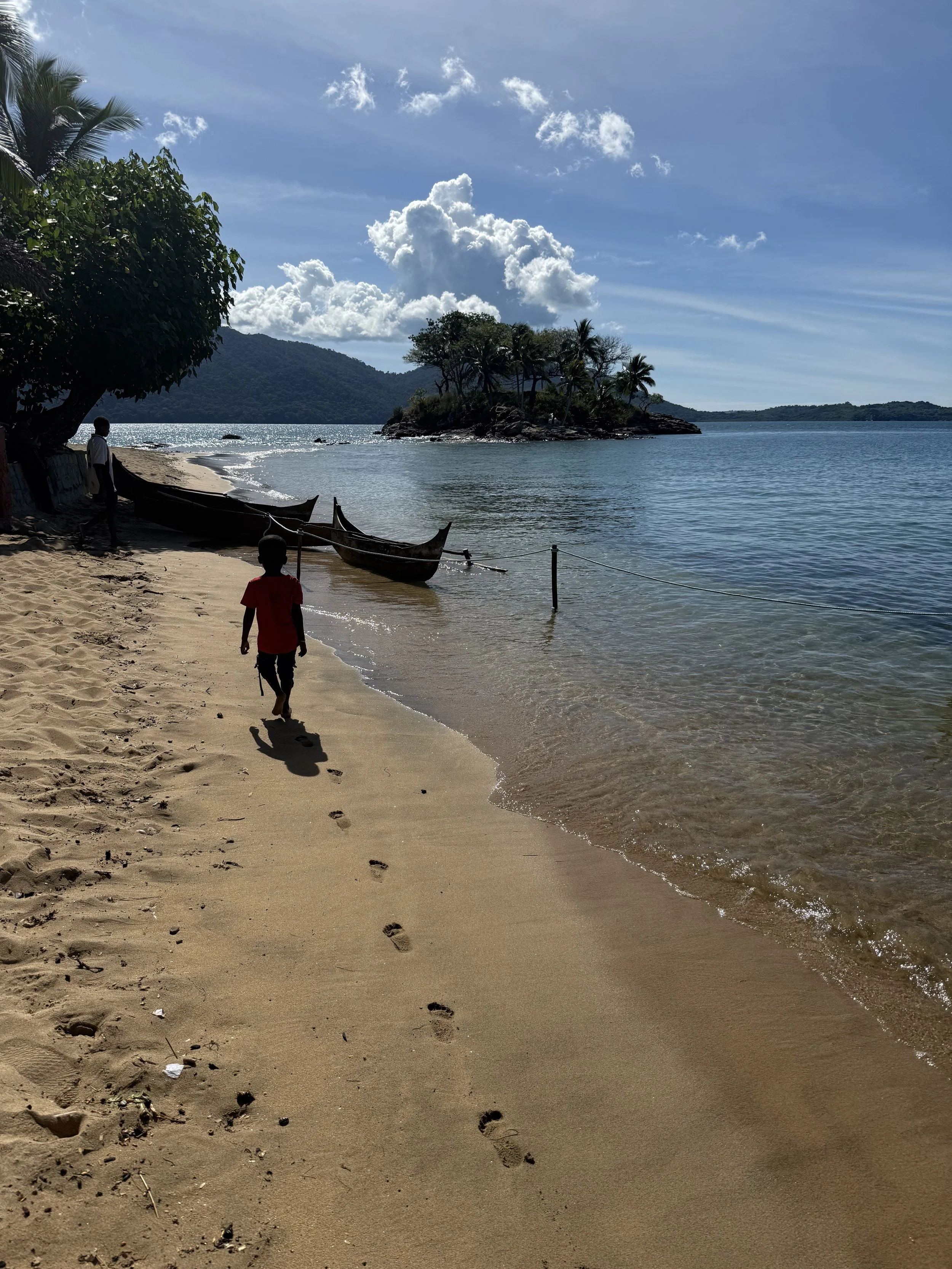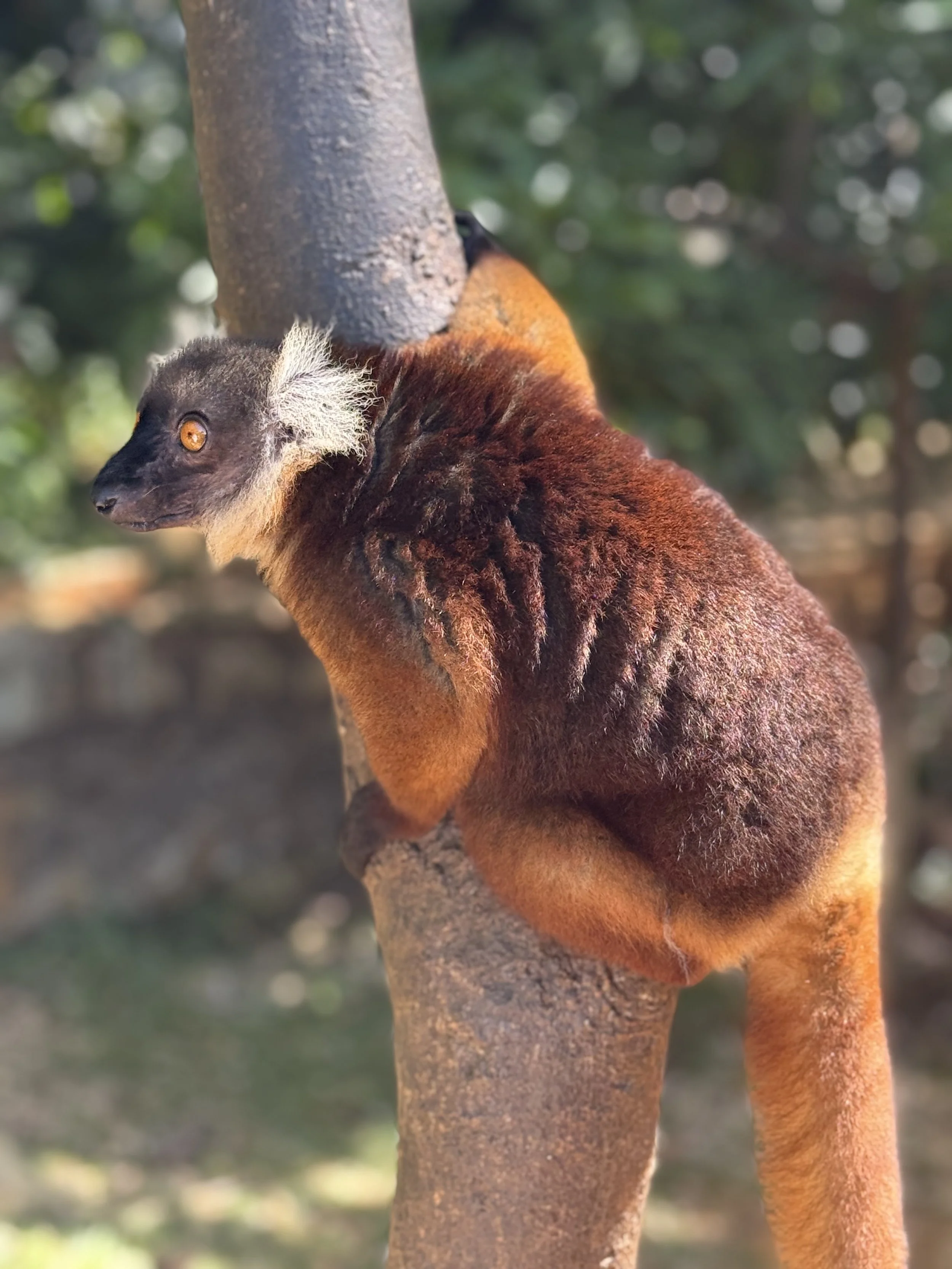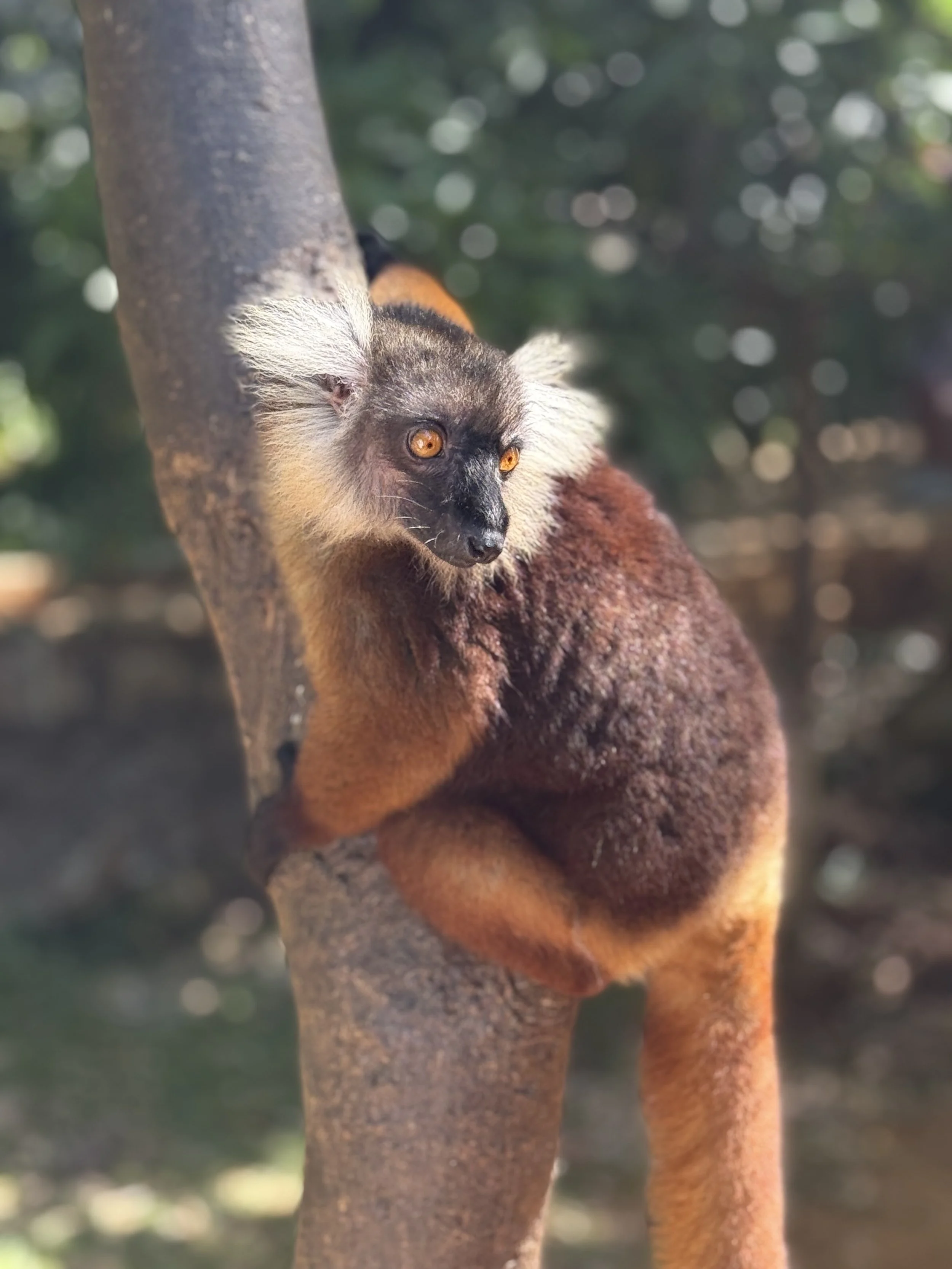Madagascar: Wet Landings, Lemur Selfies, and Dancing in the Streets
Ah, Madagascar — just the name sounds like adventure, doesn’t it?
You might picture baobab trees, chameleons, and of course, lemurs (or maybe, let’s be honest, you just think of the movie Madagascar and that “I like to move it, move it” song). But there’s so much more to this island nation, floating like a giant green spaceship off the southeast coast of Africa.
Geopolitically, Madagascar is fascinating: once part of the ancient supercontinent Gondwana (geography nerds, unite!), it broke away about 88 million years ago, creating a natural evolutionary lab where 90% of its wildlife exists nowhere else on earth. Humans only arrived around 1,500-2,000 years ago, a mix of Austronesian seafarers from Southeast Asia and Bantu-speaking Africans — so its culture today is a unique mashup of Asian, African, and French influences.
And the lemurs? They’re Madagascar’s superstars. Lemurs are primates found only on Madagascar and its surrounding islands — there are over 100 species, ranging from tiny mouse lemurs to the larger, charismatic ring-tailed lemurs. These quirky, wide-eyed creatures evolved here in isolation, giving Madagascar its global reputation as a biodiversity hotspot. Sadly, many species are endangered due to habitat loss and climate change, making places like Nosy Komba extra special for visitors hoping to see them up close.
Island Time and Wet Feet
Our ship anchored offshore, and before we even set foot on Madagascar, we got a taste of “island time.” The local tenders — small boats meant to shuttle us to land — showed up fashionably late, but no one seemed too stressed. Hey, we’re in the tropics!
When the boats arrived, they zipped us over to Nosy Komba — aka the Isle of Lemurs. And that’s when the fun really started:
Wet landing! This means you hop out of the boat into the ocean and wade ashore. For some of the cruisers, this was a new and slightly nerve-wracking experience (especially those with nice shoes or dodgy knees). But honestly, it was kind of fun — there’s something adventurous about splashing up onto a tropical beach like a castaway from Survivor.
Lemurs, Lizards, and a Whole Lot of Bananas
Once we dried our feet and put shoes back on, we split into small groups and followed our local guides through the village and up into the hills.
The village walk was a highlight on its own. Colorful market stalls lined the paths, selling wood carvings, lemur figurines made of coconut husks, embroidered linens, handwoven baskets, bright fabrics, snacks, and paintings. Little kids zipped by us, men played what looked like a tropical version of bocce ball, and the whole place buzzed with energy and smiles.
The people here? Industrious, lively, and absolutely ready to sell you something charming.
Meet the Locals (The Furry Ones)
We hadn’t been walking through the forest for more than five minutes when — bam! — four lemurs popped out of the bushes like they were waiting for us. They perched casually on a stone wall, tails dangling, faces tilted, looking like some cross between a monkey, a cat, and a little forest spirit.
Pro tip: The guides carry small banana bits, which definitely helps the lemurs warm up to visitors. I mean, who wouldn’twant a snack for their trouble?
We learned that lemurs are social animals, often living in matriarchal groups (yep, the ladies are in charge), and their big, round eyes help them see in low light. Each species has its own quirky behavior — some leap through the trees like gymnasts, others croon eerie calls through the forest. And yes, they’re just as adorable in person as they are in pictures.
The lemurs didn’t disappoint. We saw them everywhere, hopping gracefully from branch to branch, eyeing us curiously, and sometimes even getting a little too friendly. One particularly bold lemur jumped onto Jenny’s shoulder for the ultimate photo op. She handled it like a pro, grinning while the lemur struck its best Instagram pose.
Along the way, we also spotted a giant tortoise, some long sleek lizards, a bright green gecko, a snake (don’t worry, it kept its distance), and a chameleon flashing its incredible colors. Madagascar’s wildlife really does live up to the hype — it’s like nature’s own magic show.
Heat, Music, and Dancing Feet
The hour-long hike was hot — like, sticky tropical hot — but completely worth it.
Back in the village, the locals had set up refreshments, music floated through the air, and soon the dancing began. Jenny and our new friend Darlene didn’t hesitate; they jumped right in, dancing along with the locals, laughing, and swaying to the beat. It was one of those moments where you realize travel isn’t just about what you see, but who you meet and how you connect.
Final Splash and a Big Smile
Eventually, it was time to wade back into the water, climb onto the boat, and head back to our ship. We left Nosy Komba with wet shoes, sweaty clothes, and huge smiles.
Madagascar charmed us not just with its incredible wildlife, but with its vibrant people, lively villages, and the kind of travel moments you just can’t script — like a lemur on your shoulder or a spontaneous dance party on a tropical island.
Would we go back? In a heartbeat. But next time, we might bring a spare pair of dry socks.
Stay tuned for the next chapter of the adventure — who knows what’s around the next port
